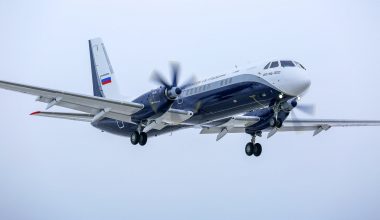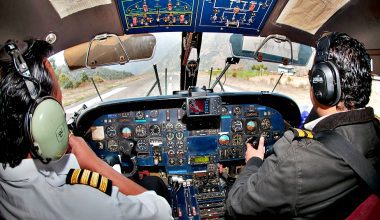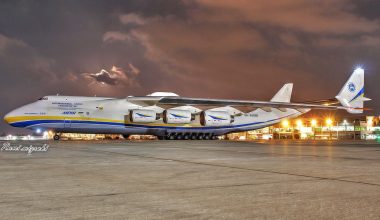Tenerife airport Disaster, Two Boeing 747 passenger jetliners crashed on the runway, which resulted in the death of a total of 583 passengers at Tenerife Airport, which was previously known as Los Rodeos Airport. It is one of the most dangerous air crashes in the history of aviation.
Tenerife is a famous tourism destination, which became the center for one of the world’s worst airline disasters known as Tenerife airport disaster.
Read More: Farewell of KLM Boeing 747-400 jumbo jets

On March 27, 1977, many flights of Gran Canaria were diverted to Los Rodeos due to terrorist incidents, which included KLM Flight 4805 and Pan Am Flight 1736. The airport soon became crowded with airplanes parking which blocked the only taxiway of the airport. It caused the departing aircraft on the airports to taxi on the runway instead. Thick fogs were drifting across the airport, which led to the loss of visibility. The aircraft and control tower were not able to see each other in such a scenario.
The KLM flight had departed Schipol Airport, Amsterdam, with three pilots on board for Gran Canaria. As they got the information about the terrorist attack, they were forced to divert the flight to Tenerife North Airport. IT was soon joined by Pan Am Flight 1736, flying from Los Angeles to Gran Canaria, with the stopover at New York. All 380 passengers and13 crews were on board the aircraft on Pan Am. Captain Grubbs did so to handle the inconvenience caused by the bomb explosion at Gran Canaria Airport. While KLM captain Jacob Van Zanten had let the passengers disembark and decided to refuel the plane to save time while waiting for the flight resume permission.
As Gran Canaria Airport re-opened, aircraft were getting ready for departure. During this time, KLM was refueling and had the passengers waiting at the main terminal. Meanwhile, Pan Am was full prepared for flying to its main destination. However, its access to the runway was blocked by Boeing Jet of KLM. It couldn’t move forward, which left no choice except to wait for KLM to refuel fully.
Scenario before collision
After the tense situation of Gran Canaria settled down, it was reopened for flights. So both KLM flight 4805 and Pam Am 1736 were prepared to hop towards Gran Canaria, which was the main destination for both flights. It was KLM which was the first flight to depart. The instruction given to them was to taxi down runway 12 and make a 180 degree turn to line up onto runway 30, which was the end of the runway. This procedure is also known as runway backtrack. They had to wait there. They would be followed by Pan Am onto the runway and exit through the C-3 taxiway, which was the earliest exit that Pan Am could take while using the parallel taxiway to taxi to the runway.

At first, the crew of KLM was unsure about the taxiway they were supposed to turn at, which was soon clarified by the air traffic controller, and the KLM crew taxied down the runway.
A short time after, the Pan Am crew got the taxiway clearance. The crew of Pan Am was confused if they had to take the first or third exit. After getting clarification from the controller, the crew proceeded on the taxiway (c-3) they had to use. Low clouds, which contributed to low visibility, couldn’t let the crew onboard see any signs or marks to identify the third taxiway. The visibility had reduced from 500 meters to 100 meters; in such case, neither of the jets was in a position to spot each other, or else the attempt could have been made to avoid the collision, and disaster wouldn’t happen. The Pan Am were still unclear of their runway position before the crash occurred.
Read More: The world’s first in-flight draft beer service in KLM
Before KLM had got the take-off clearance, it had initiated its take-off run after lining up. Then the pilots on board communicated with the air traffic controller. Initially, the controller has replied with ‘OK,’ which the captain mistook for take-off clearance. However, the controller eventually instructed the captain to stand by. This message couldn’t reach the captain because of interference. KLM, unaware of the last message initiated to roll for take-off, the captain moved the aircraft forward.

On the other hand, Pan Am was asked to call the ATC when they had cleared the runway. This was heard by the flight engineer of KLM, who alarmed the captain and was dismissed immediately.
The sequential call from Pan Am had interrupted the radio frequency, and the KLM crew missed the last part of the controller’s message. The interference also blocked the Pan Am crew’s message that they were still taxing down the runway.
What made collision on Tenerife Airport Disaster?
Since low and deteriorating weather due to thick clouds had added up to the uncertainty, Pan Am spotted the KLM’s landing lights just as it had reached taxiway C-4 through the fogs. It made a desperate try to leave the runway by applying full force to the throttle and made the left turn sharply to avoid the collision. Meanwhile, KLM aircraft was trying to make an early rotation, and by the time they saw Pan Am, they were too fast to stop. They were traveling at approximate260 kilometers per hour within a 100-meter distance of Pan AM. The nose of KLM was clear of Pan Am, but its right engine crashed onto the front portion of the fuselage; the left engine slammed the empennage. The whole left, right side of the plane turned open when the explosion occurred.

The KLM aircraft left the ground for few moments before it could no longer fly and crashed 150 meters, sliding down 300 meters of the runway.
The outer left engine had been sheared off, and wings were damaged. Both Boeing 747 got destroyed in the collision. The aircraft, filled with a load of fuels, ignited instantly. For many hours, the fire couldn’t be subdued. All 380 passengers and aircraf13 crews were on board the aircraft on Pan Am. Captain Grubbs did so to handle the inconvenience caused by the bomb explosion at Gran Canaria Airport. While KLM captain Jacob Van Zanten had let the passengers disembark and decided to refuel the plane to save time while waiting for the flight resume permission.

Soon after, Gran Canaria Airport reopened, so aircraft were getting ready for departure. During this time, KLM was refueling and had the passengers waiting at the main terminal. Meanwhile, Pan Am was full prepared for flying to its main destination. However, its access to the runway was blocked by Boeing Jet of KLM. It couldn’t move forward, which left no choice except to wait for KLM to refuel fully.
All three countries, i.e., Spain, U.S, and the Netherlands, including both airlines, investigated the accident, which revealed the long chain of events that ultimately resulted in this tragedy. The massive investigation report demonstrated that the captain of KLM had initiated take-off without ATC clearance. It also mentioned the unintentional take-off by the captain. The KLM airlines accepted the responsibility for the accident and compensated the victims on the money range between 58000 and 600000 dollars.
Tenerife airport disaster survivors
At least 71 people on board Pan Am managed to escape from the burning fuselage. But several people couldn’t last long of their injuries, leading to the final death toll of 583 passengers in that accident. There were 61 survivors who included four flight attendants, three cockpit crew members, and two cockpit observers who weren’t injured at all. None of the passengers of KLM survived the crash. All 248 passengers lost their lives. Among 61 survivors, 16 were reported not to be injured much. None of the passengers, who were behind row 37 of Pan Am, made it through the crash.
The major contributing factors to the accidents are as follows:
- Patches of fog leading to poor visibility.
- Anxious KLM crew, trying to take off impatiently to avoid the strict Dutch rules regarding overtime.
- Trouble in understanding taxi instruction by both cockpit crews.
- Missed and misinterpreted communication transmission between ATC and Crews.
- Simultaneous radio messages causing the interference.
Many other non-critical factors added up to the disaster.
- No ground radar
- Inappropriate instruction or non-standard response
- Pan Am aircraft not leaving the runway at 3rd intersection
- A pile of aircraft parking on the taxiway at a small airport, causing the blockage due to a bomb attack at Gran Canaria Airport.
Consequences of Refueling by KLM
The dense fog had already developed by the time KLM refueled. They were 35 minutes late for the take-off. Additional weight was loaded ton onto the aircraft due to over forty tons of fuel which increased the runway distance to take off or get off the ground. A load of fuels ignited the fuse of the aircraft instantly, which exploded into a fireball, which caused the death of all people on board. On the fog-bound airport, no aircraft was in a position to be seen from the other, and runway or two 747’s on it was visible for the controller either. Airport was not equipped with ground radar, so only voice reports over the radio were the way to get an idea of where each airplane was.
Lessons from Tenerife Airport Disaster
All environmental conditions, human factors, unsafe actions led to this disaster. The accident became the lesson to be learned to avoid further deadly crashes. ATC communication phrases were standardized to reduce the misunderstanding between the controller and the crew. The captains were instructed to take the decisions of the crew into consideration and evaluate it. Team decision-making was prioritized. The crews were to challenge the captain when they were not right. This concept later took the form of ‘crew resource management, which is now mandatory for every pilot to take training.
Although the accident had a tragic ending, it contributed to reforms of airline regulation to make aviation safer than before. The Spanish government installed the ground radar system after the accident.
The new Tenerife South Airport was opened in 1978, which offers international flights to tourists. Tenerife North Airport served the air traffic again when the new terminal opened in 2002.






